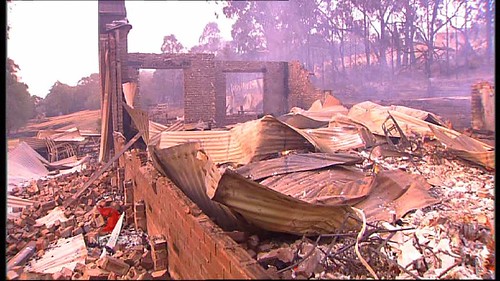Autumn in my pocket
I've returned to writing in my writing notebook on the tram to work again, and this post begins from what I wrote there.
In my pocket is a light blue cotton handkerchief, the kind that is thick enough and large enough to wipe your face with without it scrunching into a ball, or blow your nose in without being sodden within three gusts – a handy feature for the impending cold-virus season. That's possibly because it is relatively new, and still has the fresh stiffness of new cotton. It has crisscrossing stripes of navy contrast along the edges that mark it as a man's handkerchief, and an upper-case 'P' embroidered in navy blue in one corner. It was my father's.
My father always had a handkerchief with him – every day, he'd put one in his left trouser pocket. (I've long long followed his habit.) Dad had quite a stock of them. My sister and I insisted that he have one just so for the funeral.
Each time I've been up to Brisbane lately, I return – on my mother's urging – with a small load of my father's clothes. This time, the load included a handful of these good handkerchiefs and a couple of pairs of new socks dad had not gotten around to wearing. They were still attached to their label.
Today, I'm wearing a light, grey cashmere jumper of dad's. Now I understand the love for cashmere – light, soft, almost luscious – and appreciate the premium put on them. I'd probably never afford cashmere myself. There was a time, some ten years ago, when my father could afford to buy them and appreciated their warmth and comfort in Melbourne's winter, however briefly he lived here. I found this jumper, along with another maroon cashmere and his chunky blue wool cardigan that I loved to see him in, stored in the bottom drawer of a dresser he hardly used. I wonder if he got to enjoy them much, considering how brief and relatively mild Brisbane's winters are. Though he'd been complaining of feeling the cold bitterly, especially in his hands and feet, in the last couple of years.
This morning in Melbourne, it is cool, grey and raining. It's probably closer to 14˚C than 21˚C in the range forecast for today. Autumn has announced itself dramaticaly, and I'm glad to be warm and snug in a fold of cashmere.
 This morning, the online sponsorships and cash donations for my Shave for a Cure drive had past my $500 target! (As evident in the image of the fundraising meter.) Weighing up the pledges that have been made and the possibilities of another week of fundraising, I've decided to extend my goal by $200 – I'm now aiming to raise $700 for the Leukaemia Foundation by Friday 13 March.
This morning, the online sponsorships and cash donations for my Shave for a Cure drive had past my $500 target! (As evident in the image of the fundraising meter.) Weighing up the pledges that have been made and the possibilities of another week of fundraising, I've decided to extend my goal by $200 – I'm now aiming to raise $700 for the Leukaemia Foundation by Friday 13 March.I'd appreciate any help you can offer me to reach that goal, including spreading the word. And thank you to all of you who helped out, made donations, and spread the word.
In a week, I will have my hair shaved for Shave for a Cure. It will be a chilly affair, and I'm glad for my friend Lynn's offer to knit me a beanie to keep my head and ears warm! Thanks, Lynn! Meanwhile, keep warm. Or cool as your case may be.
Labels: death, fathers, life, weather, writing
Read more!


















